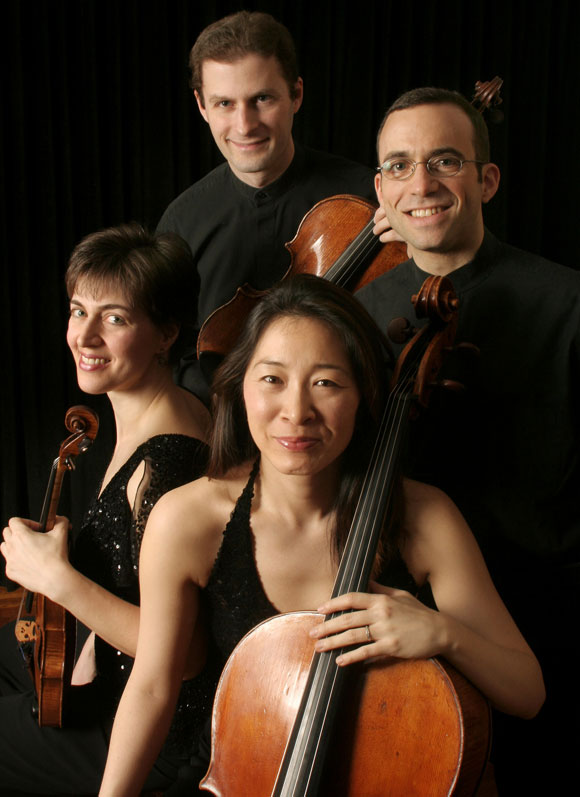Brentano String Quartet brings rich virtuosity to Four Arts in Palm Beach

The Brentano String Quartet played music of Beethoven, Schubert and Debussy Sunday at the Society of the Four Arts in Palm Beach.
Hundreds of people chose to spend a gorgeous Sunday afternoon in a darkened auditorium listening to one of Beethoven’s most challenging scores.
The String Quartet No. 13 has two endings: the Grosse Fuge, an astringent 16 minutes of musical complexity that sounds bizarre even today; and the revised closer, a lighter, more traditional movement that Beethoven wrote after complaints that the fugue was just too much for audiences to handle.
The Brentano String Quartet chose to play the Grosse Fuge ending at a packed concert at the Society of the Four Arts in Palm Beach. One of the world’s leading quartets, the Brentano musicians have a highly individual style, combined with the sort of technical excellence that can produce glowing, hall-filling sounds one moment and sparkling, knife-edge virtuosity the next. Their sound is rich, their intonation virtually perfect.
They opened with a sizzling performance of Schubert’s Quartettsatz, a single-movement work that’s all power and nervous energy. In their hands the work was so dynamically jumpy that it seemed almost as if it had been written by Mahler, with steep dynamic extremes that far exceeded typical performances of this work. They were able to bring a great deal of intensity to the performance without a remarkable amount of volume, letting the faint bite of the bow or a quickening of vibrato carry it off.
The first movement of the Beethoven received a vigorous, fairly traditional performance. The quick Presto movement was taken at a faster clip than usual and so quietly that it sometimes approached the edge of audibility, effectively creating an agitated, electric tension. They played the delicate, wistful theme of the fourth movement in a manner that seemed too spiky, imposing more interpretation on the melody than it could handle.
The Grosse Fuge was given a robust performance. The musicians opened with tightly played statements of the forbidding main themes. Then as the music quickly became complex, the themes became almost lost, with the quartet making little effort to make them stand out from the bustling music around them, as if trying to make the music sound chaotic. That had the effect of giving the two main themes that much more power when they did come back on their own. This movement was the only part of the concert in which the musicians played with a touch of violence, allowing bow scrapings to break the otherwise smooth surface — particularly second violinist Serena Canin — giving a fierce dynamism to the performance.
The other work on the program was Debussy’s String Quartet, an early composition that is his only work in the form. Although Debussy is often performed as if surrounded by mist, this performance emphasized the work’s restless energy. The quartet didn’t stint on the richness of texture that is so much a part of Debussy’s music, giving a radiant performance of the grave slow movement. But they gave the work an unaccustomed forward motion, without overwhelming it by making it too hard-driving.
Posted in Performances
Leave a Comment
Mon Jan 9, 2012
at 1:46 pm
No Comments





